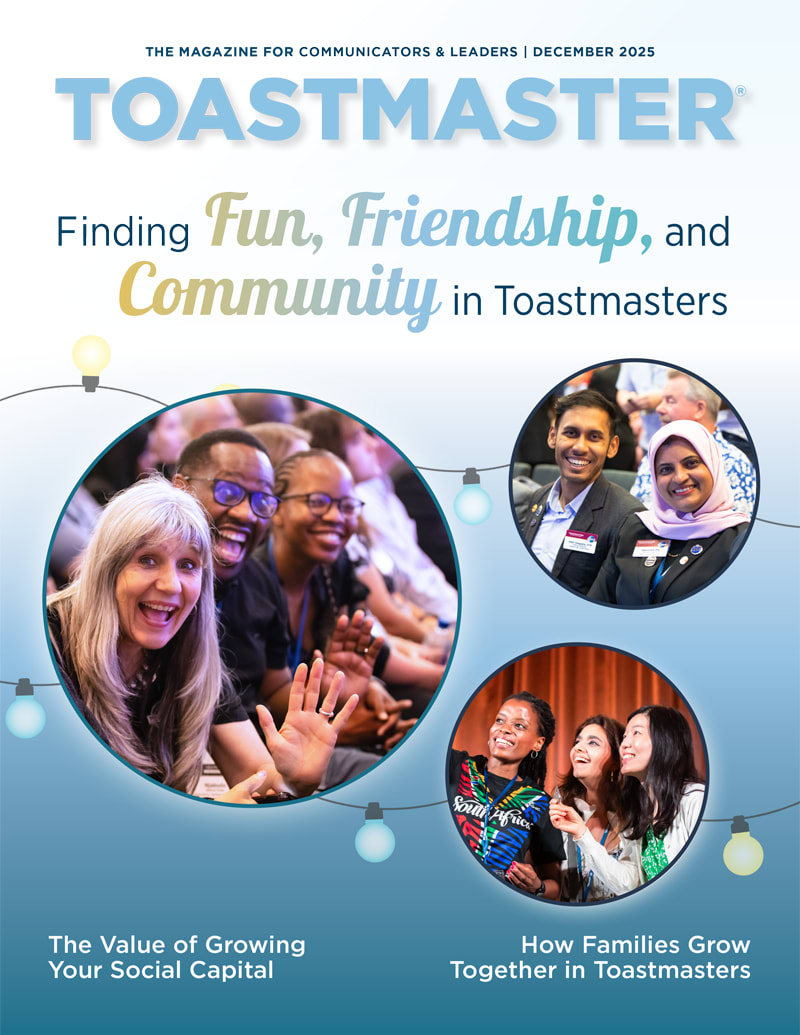Speech evaluations in Toastmasters are crucial in helping club members improve as speakers. Evaluators give specific rather than general feedback, avoid judgmental language, and identify areas where speakers excel as well as where they can improve.
But evaluations can become complex when you are asked to comment on—or receive them from—members with different cultural backgrounds. While you should never stray from the core tenets of helpful evaluations, consider the following factors:
Know the cultural backgrounds of club members. Kristen Hamling, Ph.D., a psychologist and former Toastmaster in Whanganui, New Zealand, says, “Read about the culture, research how to give feedback in that culture, and watch how others give feedback before giving it a go yourself,” she says. “You need to understand the ‘cultural code’ before giving and receiving evaluations.”
Hamling also suggests finding a “cultural mentor” to provide guidance about giving and receiving feedback for specific cultural groups.
Teach yourself how to cope with direct or negative feedback. It’s normal to feel some degree of hurt and rejection when receiving feedback you don’t agree with, or that is overly direct or negative.
Hamling says not to take such comments personally, and to learn from the process. Adopting a growth mindset—an eagerness to learn and improve—makes it easier to understand that becoming a better speaker requires taking risks, making mistakes, and learning from those mistakes, she says. “Rarely do people become great by playing it safe and being perfect all of the time.”
Understand that giving praise is not a universal practice—especially outside the Toastmasters environment. Just because some evaluators do not overtly praise your performance doesn’t mean they think you did poorly. For example, Christian Höferle, president and CEO of a training firm in Atlanta, Georgia, says that in his native Germany, praise is often given sparingly. “In some cultures, giving explicit praise is only warranted if there is some extraordinary accomplishment that goes far beyond an original objective.“
Avoid offering effusive praise; it may come across as disingenuous. “Praise can actually backfire in some situations because it can be seen as a tool to manipulate or suggest that you may have a hidden agenda,” Höferle says.
Evaluation styles differ in neutral and affective cultures. David Livermore, president of the Cultural Intelligence Center, says it is helpful to understand different cultural norms of expressiveness around the world when giving or receiving performance feedback. Neutral cultures, such as found in Japan, Scandinavian countries, and Germany, believe that minimizing emotional expressiveness is a sign of respect and dignity, Livermore says, while affective cultures, such as in Italy, France, Brazil, and some countries in the Middle East, place more value on expressive communication and sharing feelings.
Uses and interpretations of eye contact vary. The use of eye contact in face-to-face evaluations also is interpreted differently around the world, Livermore says, with varying connotations in hierarchical and egalitarian cultures. Hierarchical cultures place an emphasis on titles and honorifics, while egalitarian societies do not value titles as much and show less deference to leaders.
“If the person being evaluated is more senior than you in title or age, in some cultures it’s considered an offense to look them directly in the eye or to sustain eye contact,” Livermore says.
Failure to understand such cultural norms can create misunderstandings. “If you didn’t understand such cultural differences, you might think those not making eye contact in these situations were trying to hide something or had little confidence, when in fact not making eye contact is how they show respect,” Livermore says.




